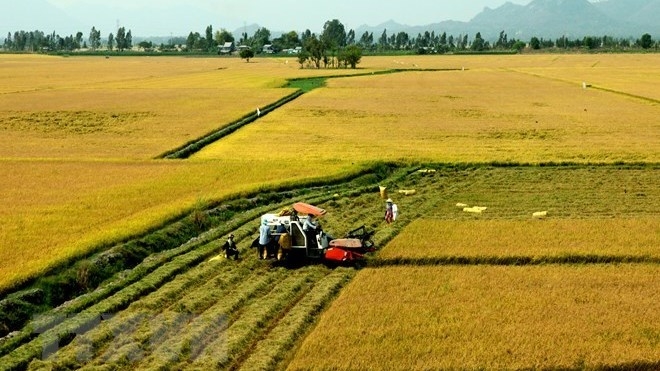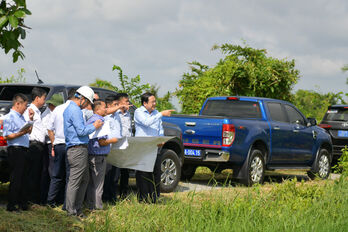
Vietnam’s agricultural products have been exported to more than 180 countries and territories worldwide. (Illustrative photo: VNA)
The Government leader expressed his hope that, in the future, Vietnam would soon become a deep processing centre of world agriculture and a logistic hub of global agricultural trade.
The confidence and expectation of the Prime Minister in agriculture is not without foundation. Over the past 10 years, agriculture has maintained steady growth and development. Particularly since 2013, the agricultural sector has implemented restructuring in accordance with the Government's decision and has made radical changes in the direction of shifting from quantity to quality and added value. The total agricultural, forestry and fishery export revenue in the past 10 years (2008 - 2017) reached US$261.28 billion, an increase of 9.24%. In 2017, the figure was estimated at US$36.52 billion, an increase of US$20.05 billion compared to 2008. It is expected that in 2018, the export revenue of agriculture, forestry and aquaculture will reach US$40 billion. Vietnam’s agricultural products have been exported to more than 180 countries and territories worldwide, ranking second in Southeast Asia and 16th in the world, contributing to creating foreign currency revenue and reducing trade deficit for the whole country.
Apart from the efforts made by the whole agricultural sector, the aforementioned results are attributed to the due attention given by the Party and the Government. In just the two years of 2016 and 2017, the Government and the Prime Minister issued at least 10 decrees on mechanisms and policies to create favourable conditions for enterprises to change their production models, promote value chains, and build the brands of Vietnamese agricultural products in the international market. Most recently, Decree No.57 of the Government issued in April, 2018, on the mechanisms and policies to encourage enterprises to invest in agriculture and rural areas is expected to quickly create more positive impacts and promote the development of domestic agriculture.
However, in realising the Prime Minister’s instruction, the agricultural sector may encounter potential constraints due to backward agricultural production, particularly in post-harvest production and processing. It requires more investment from enterprises. At present, approximately 49,600 enterprises nationwide have invested in agriculture, accounting for 8% of the total number of enterprises operating in the country, and creating more than 4.5 million jobs for rural workers. More than 95% of enterprises operating in agricultural sector work on a small or micro scale.
At present, it is necessary for the agricultural sector to continue to focus on implementing policies to support and encourage the development of deep-processing industry and the processing of instant food products, while promoting mechanisation to reduce post-harvest losses and production costs, and creating high value added agricultural products.
Furthermore, the Ministry of Planning and Investment should soon issue a circular on guiding the implementation of Decree No.57 so that enterprises investing in agriculture and rural areas will have the right to enjoy the preferential policies of the Government. The Ministry of Trade and Industry should finalise the decrees related to trade activities, especially Decree No.159 on rice export, and links between the supply and demand of domestic and foreign markets for Vietnamese agricultural products. The Finance Ministry needs to revise the Decree No. 55 on credit policies for agricultural and rural development in the direction of raising lending rates and extending credit policy beneficiaries to create favourable conditions for enterprises to access loans to invest in the development of agricultural commodity production./.
NDO
 55km of Ho Chi Minh City Ring Road 4 through Tay Ninh was handed over for site clearance
55km of Ho Chi Minh City Ring Road 4 through Tay Ninh was handed over for site clearance



